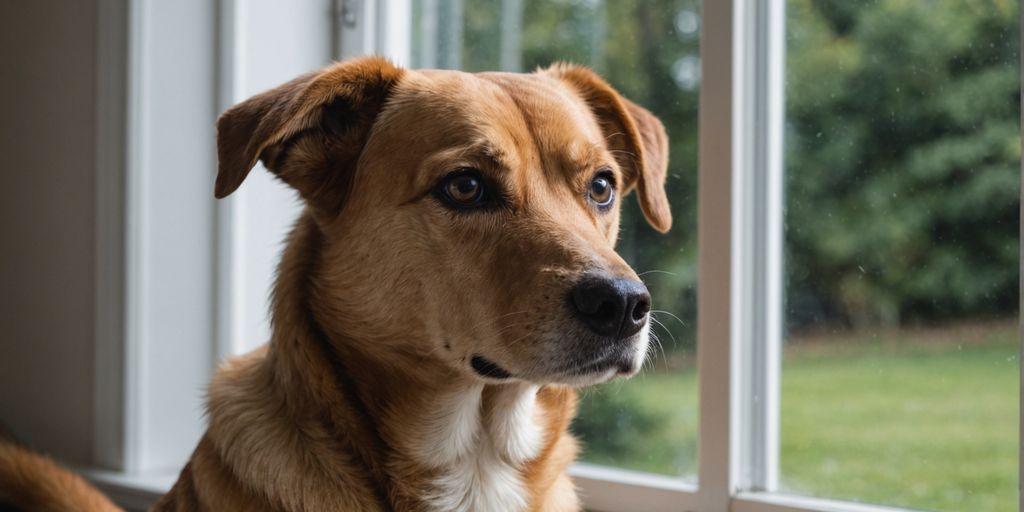Separation anxiety in dogs is a common issue that can cause significant stress for both the pet and the owner. Understanding the signs, causes, and management strategies is essential for ensuring the well-being of your furry friend. This article explores various aspects of separation anxiety in dogs, from identifying symptoms to effective management techniques and when to seek professional help.
Key Takeaways
- Recognizing the signs of separation anxiety in dogs is crucial for early intervention and effective management.
- Common causes of separation anxiety include early life experiences, traumatic events, and changes in routine or environment.
- Behavioral modification techniques and environmental enrichment can help manage separation anxiety in dogs.
- Early training and socialization are key to preventing separation anxiety in puppies.
- Seeking professional help is important for severe cases of separation anxiety to ensure proper treatment and support.
Signs and Symptoms of Separation Anxiety in Dogs
Behavioral Indicators
Dogs with separation anxiety often show clingy behaviors. They might follow their owners from room to room and rarely spend time alone. When left alone, they may exhibit:
- Pacing: Dogs may walk back and forth, unable to settle down.
- Vocalization: Persistent barking or howling, often continuing the entire time they are alone.
- Destruction: Chewing on objects, digging at doors, or destroying household items.
- Escaping: Attempts to escape confinement, sometimes resulting in self-injury.
Physical Symptoms
Physical signs of separation anxiety can include:
- Excessive drooling or panting
- Loss of appetite
- Trembling or shaking
- House soiling: Urinating or defecating indoors when left alone
Severity Levels
The severity of separation anxiety can vary widely among dogs. Some may only show mild signs, like refusing to eat when alone, while others may exhibit extreme behaviors, such as breaking windows or chewing through doors to escape. Recognizing the severity is crucial for effective management.
It's important to note that many behaviors attributed to separation anxiety can have other medical or behavioral causes. Always consult a veterinarian to rule out other issues.
Common Causes of Separation Anxiety in Dogs
Early Life Experiences
Dogs that are separated from their litter too early, especially before 60 days, are more likely to develop separation anxiety. Puppies need time to bond with their mother and siblings to learn social skills. Dogs from pet shops are particularly at risk.
Traumatic Events
A single traumatic event, like being left alone during a storm or a break-in, can trigger separation anxiety. Dogs that have experienced abandonment or have been rehomed multiple times are also more susceptible.
Changes in Routine or Environment
Sudden changes, such as a new family member, moving to a new house, or a change in the owner's work schedule, can cause anxiety. Dogs thrive on routine, and any disruption can be stressful for them.
It's important to recognize the signs early and take steps to help your dog feel more secure. Regular exercise, a balanced diet, and mental stimulation can improve a dog's well-being and reduce anxiety.
Effective Strategies to Manage Separation Anxiety
Behavioral Modification Techniques
Behavioral modification is key to managing separation anxiety in dogs. Desensitization and counter-conditioning are two effective methods. Start by leaving your dog for short periods and gradually increase the time. This helps them get used to being alone without feeling scared. Positive reinforcement, like giving treats when you leave, can also help.
Environmental Enrichment
Creating a stimulating environment can reduce anxiety. Provide toys, puzzle treats, and safe spaces for your dog. A tired dog is less likely to be anxious, so ensure they get plenty of exercise. Doggy daycare or a pet sitter can also be beneficial.
Professional Help and Medication
In severe cases, professional help may be needed. A veterinarian can prescribe anti-anxiety medication. Consulting a certified dog trainer or animal behaviorist can also provide tailored strategies to manage your dog's anxiety.
Unlock serenity: transform your home into a spotless haven, puppy included! A calm and supportive environment is crucial for managing separation anxiety in dogs.
Preventing Separation Anxiety in Puppies
Early Training and Socialization
Start training and socializing your puppy early. Introduce them to new experiences and people gradually. This helps them become comfortable in different situations. Socialization is key to raising a balanced and happy dog.
Gradual Alone Time
Teach your puppy to be alone for short periods. Begin with a few minutes and slowly increase the time. This helps them understand that being alone is okay and that you will return.
Creating a Safe Space
Create a safe and comfortable space for your puppy. Use a crate or a specific room where they feel secure. Fill it with their favorite toys and a cozy bed. This space will become their sanctuary when you are not around.
Remember, patience and consistency are crucial. With the right approach, you can help your puppy grow into a confident and independent dog.
Understanding the Impact of Separation Anxiety on Dogs and Owners
Emotional Toll on Dogs
Separation anxiety can cause dogs to experience intense stress and fear. They may exhibit behaviors like pacing, whining, or trembling when left alone. This constant state of anxiety can lead to a decline in their overall well-being.
Stress and Anxiety in Owners
Owners of dogs with separation anxiety often face their own set of challenges. The constant worry about their pet's distress can lead to increased stress and anxiety. Additionally, dealing with the destructive behaviors that often accompany separation anxiety can be overwhelming.
Long-term Consequences
If left untreated, separation anxiety can have long-term effects on both dogs and their owners. Dogs may develop chronic behavioral issues, and the strain on the owner-pet relationship can lead to difficult decisions, such as rehoming the dog. It's crucial to address separation anxiety early to prevent these outcomes.
When to Seek Professional Help for Your Dog's Separation Anxiety
Identifying Severe Cases
If your efforts to mitigate your dog's separation anxiety prove insufficient, or if severe symptoms and behavioral changes persist, it may be time to seek professional help. Signs of severe separation anxiety include destructive behavior, excessive vocalization, and self-injury. If your dog is consistently showing these behaviors, professional intervention is necessary.
Types of Professionals to Consult
There are several types of professionals who can help manage your dog's separation anxiety:
- Veterinarians: They can rule out any medical issues and may prescribe anti-anxiety medication.
- Certified Professional Dog Trainers (CPDT-KA): These trainers specialize in behavior modification techniques.
- Certified Applied Animal Behaviorists (CAAB): They have advanced degrees in animal behavior and can provide in-depth treatment plans.
- Veterinary Behaviorists: These are veterinarians with additional training in animal behavior and can offer both medical and behavioral treatment options.
What to Expect from Professional Treatment
When you seek professional help, you can expect a comprehensive evaluation of your dog's behavior. The professional will likely ask about your dog's history, daily routine, and specific symptoms. Treatment plans may include a combination of behavioral modification techniques, environmental changes, and medication. The goal is to reduce your dog's anxiety and improve their quality of life.
Seeking professional help can make a significant difference in managing your dog's separation anxiety and improving their overall well-being.
Conclusion
Separation anxiety in dogs is a challenging issue, but it's one that can be managed with patience and the right approach. By understanding the signs and causes, pet owners can take proactive steps to help their furry friends feel more secure when left alone. Training, behavior modification, and sometimes even medication can make a significant difference. Remember, every dog is unique, so what works for one might not work for another. The key is to stay patient and consistent. With time and effort, you can help your dog overcome their fears and lead a happier, more relaxed life.
Frequently Asked Questions
What are the common signs of separation anxiety in dogs?
Common signs include pacing, whining, excessive barking, destructive behaviors like chewing or digging, and accidents in the house such as urinating or defecating. Some dogs may drool excessively or try to escape confinement.
What causes separation anxiety in dogs?
Separation anxiety can be caused by various factors such as early life experiences, traumatic events, or changes in routine or environment. Dogs that have never been left alone or have experienced a traumatic separation are more prone to this condition.
How can I help my dog with separation anxiety?
You can help by using behavioral modification techniques, providing environmental enrichment, and seeking professional help if needed. Gradual desensitization to being alone and creating a safe space for your dog can also be beneficial.
Can separation anxiety in dogs be prevented?
Yes, it can be prevented with early training and socialization. Gradually increasing the time your puppy spends alone and creating a safe and comfortable space for them can help prevent separation anxiety.
When should I seek professional help for my dog's separation anxiety?
You should seek professional help if your dog's separation anxiety is severe and they are injuring themselves or causing significant destruction. A certified dog trainer or a veterinary behaviorist can provide specialized treatment plans.
What impact does separation anxiety have on dogs and their owners?
Separation anxiety can cause significant emotional distress for both dogs and their owners. Dogs may experience extreme stress and fear, while owners may feel anxious and overwhelmed. Long-term consequences can include a strained human-animal bond and potential rehoming of the dog.

